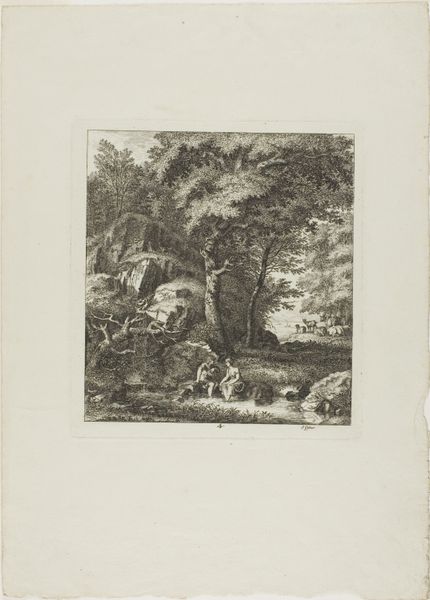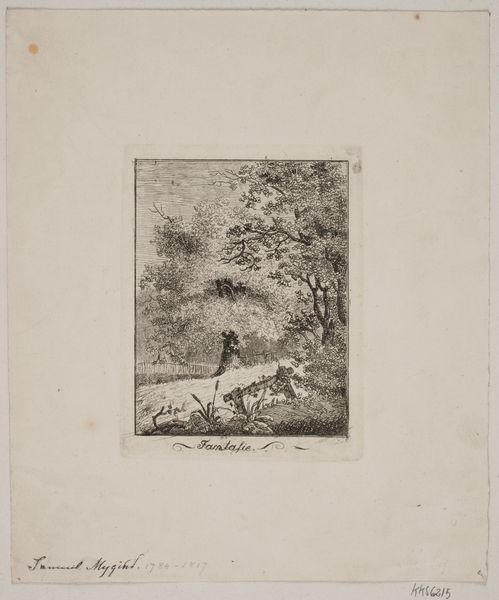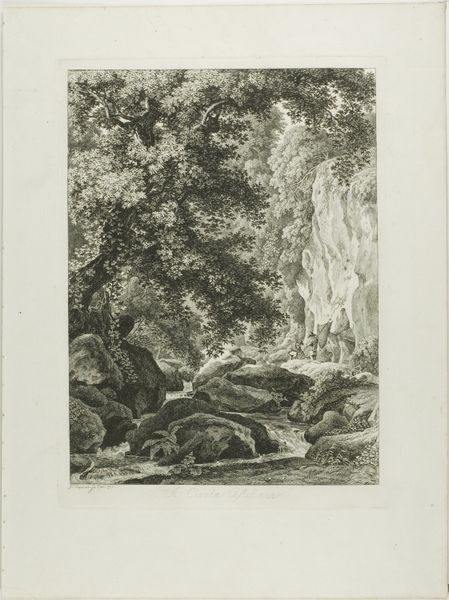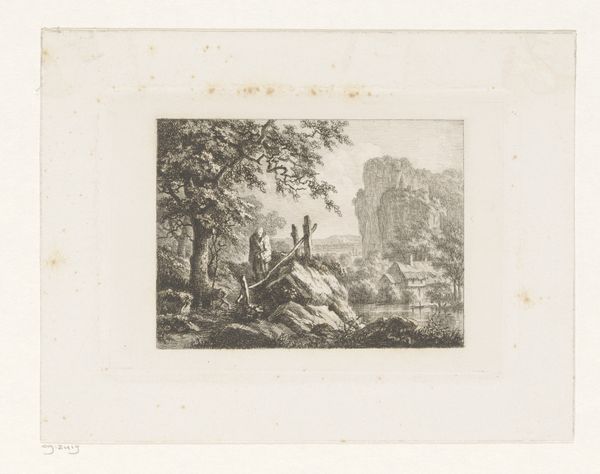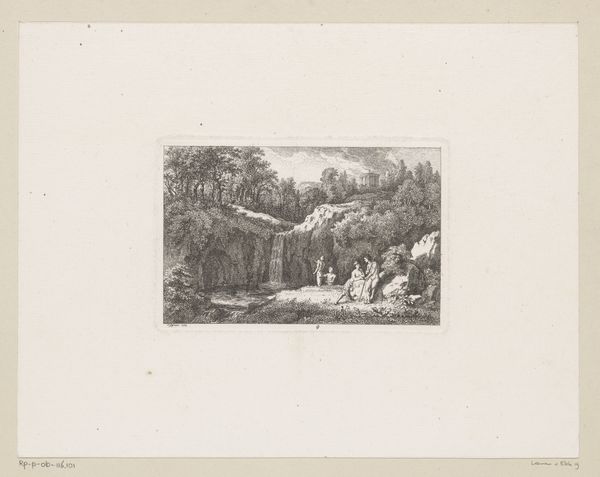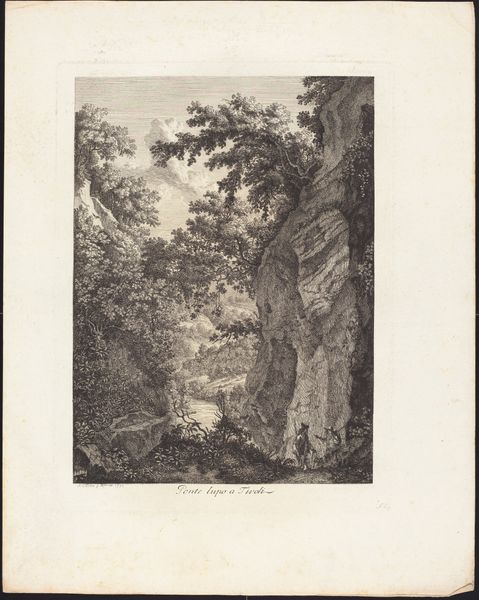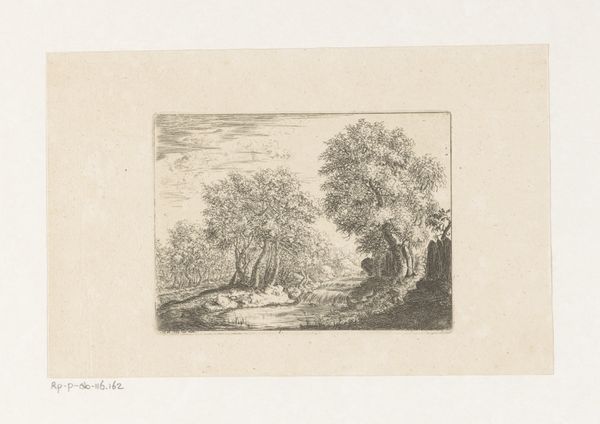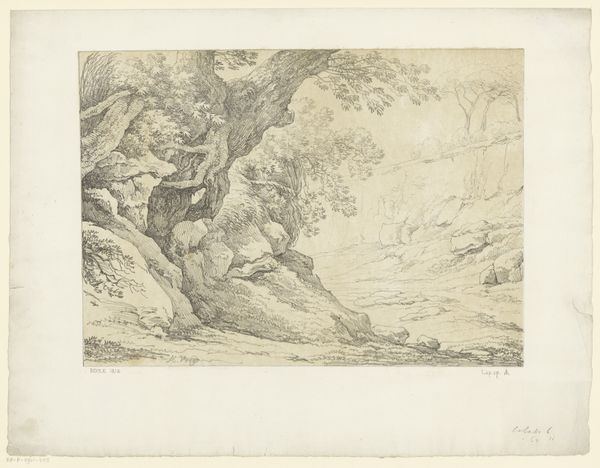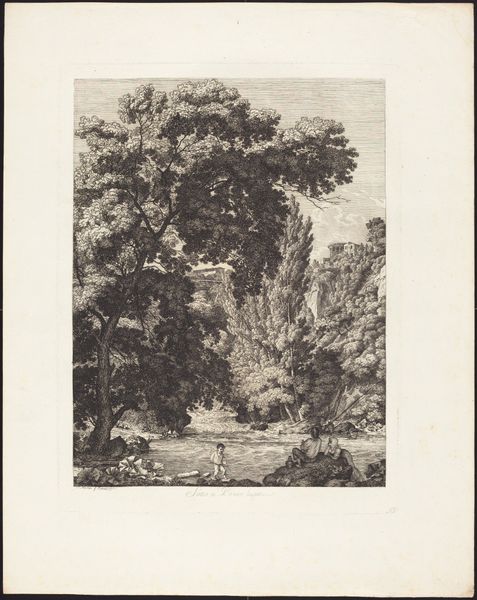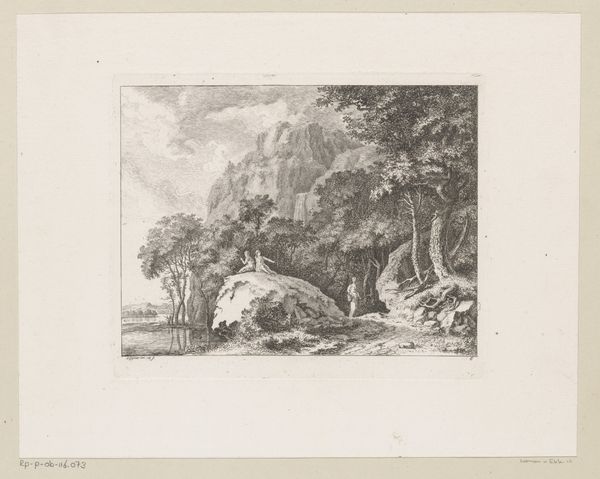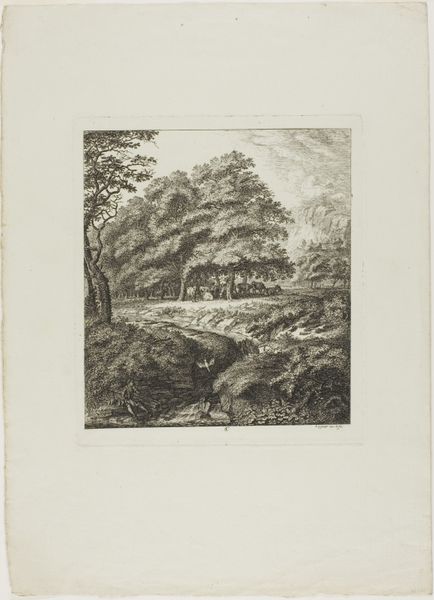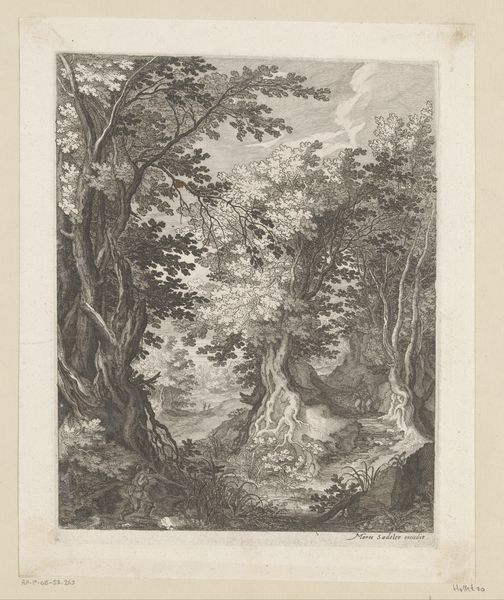
drawing, print, etching, paper
#
drawing
#
germany
# print
#
etching
#
landscape
#
paper
#
romanticism
Dimensions: 247 × 200 mm (plate); 470 × 331 mm (sheet)
Copyright: Public Domain
Curator: Before us is Jacob Wilhelm Mechau’s "The Ravine," an etching made in 1794. It resides here at the Art Institute of Chicago. The print medium gives the work an immediate sense of reproducibility and dissemination of ideas that was crucial at the turn of the 19th century. What strikes you most? Editor: Initially, I see a somewhat theatrical arrangement—the dark sepia tones, the framing rocks and foliage...it all funnels the eye. The eye follows the serpentine water course and this pulls the viewer into a potentially dangerous and awe-inspiring space, an aesthetic of Romanticism. Curator: Mechau was working within a cultural moment where the aesthetics of nature and sublime feeling were intimately connected to national identity and moral virtues in the German-speaking lands. How might we view this artwork as a signifier for the era? Editor: Indeed! Look at how he articulates texture through hatching and cross-hatching— the layering and building of the rock face is quite effective, creating visual depth, even though he is only using one base pigment, what must have been applied on thin laid paper. But, do we detect anxiety here or simply beauty? The people almost feel dwarfed! Curator: Exactly, you touch upon it so keenly. This is not mere topographic rendering, or an early iteration of a postcard landscape. The travelers' journeys, depicted small relative to nature's majesty, reflect a society grappling with immense transformation, teetering between Enlightenment ideals and the raw, untamed power that shapes civilizations. Mechau invites us to think of humankind within this complex dynamic. Editor: The print also allows for interesting manipulations of light. While dark, note that Mechau uses strong side lighting, creating bold shadows which accentuate volume in his natural forms. What at first read as tonal homogeneity quickly transforms into an orchestrated play of light and shade, a kind of silent drama. Curator: Mechau was profoundly involved in printmaking, at a moment that prints acquired social relevance. With "The Ravine," Mechau isn't just showing us a location; he presents nature as a site of civic and self-discovery, reflecting how societies find meaning and shape collective memories. Editor: Ultimately, Mechau demonstrates how seemingly simple components – line, tone, composition – can converge to forge an image, at once aesthetically captivating and brimming with interpretive possibilities!
Comments
No comments
Be the first to comment and join the conversation on the ultimate creative platform.
